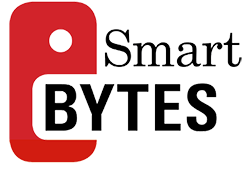6 Steps to Help Your Child Make Friends
April 22, 2024

By Shelley Lacey-Castelot, ATACP, MS
What Assistive Technology (AT) does your child with LD need to be independently successful this school year? Over the next few weeks, this blog will feature smart choices for you to consider as you make decisions about your child’s AT needs.
Because it’s not feasible to talk about all the great technology options available, the discussion will be limited to a select group that I’ve found to be most useful in helping children reach their peak performance in school.
This blog focuses on suggestions for students who have reading difficulties. In subsequent blogs I’ll discuss AT options for writing and note-taking.
In the area of reading, top contenders for students include the following:
textHELP Read&Write Gold. This is a robust software program for the Windows or Mac operating systems. Running as a bar that floats above other program windows, it has a number of reading, study, and language support features such as:
To learn more about this software, access the texthelp website at www.texthelp.com/north-america/our-products/readwrite
Voice Dream Reader, for iOS devices, is a text-to-speech app that reads files in many different formats. Features include the following:
For more information go to the website at www.voicedream.com
KNFBReader. This is an iOS app that is not designed to do everything for everyone, but is an important tool for individuals with reading and other print disabilities. It provides access to printed text on the fly. So when a handout appears that hasn’t been scanned, or an individual needs to read a complicated sign, menu, job application, etc., he can simply take a photograph of the printed text and it will instantly appear in the app and be read back to the user. Because the recognition of the text is highly accurate, students can rely on the reader to read the material correctly. Unfortunately, like Voice Dream Reader, KNFBReader utilizes the iOS dictionary (or other downloaded dictionary or web-search), which can be challenging for language impaired students. That aside, it has the following useful features:
You can learn more at www.knfbreader.com
Finally, all students with print disabilities should have a membership in bookshare.org. Through this organization, students can obtain the textbooks and novels they need to read for school and can utilize the above software to download and read the books using text-to-speech technology. Learn more at www.bookshare.org
Before you settle on any AT solutions, your child should undergo an AT evaluation to determine the technological remedies best suited to her particular strengths and weaknesses. Also note that in today’s highly mobile world, students often need a variety of tools to match the variety of environments in which they will work and the variety of assignments with which they will be tasked.
Shelley Lacey-Castelot is the Director of Literacy Solutions in Oxford and Norwalk, CT, and is an expert in the evaluation and use of AT for students with LD and ADHD. She is also a member of Smart Kids with Learning Disabilities’ Professional Advisory Board.